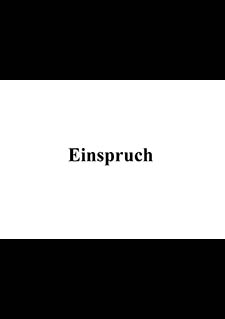Objections
Ecclesio-political disillusionment descended on large segments of Protestant Germany in the second half of 1933. Whereas the perils the current politicization in the spirit of National Socialism held for church and Christianity had usually only been discerned individual Protestants earlier, opposition within the church now developed on a broader basis.
The first oppositional parish conferences and synods formed. Together with the Pastors' Emergency League and the bishops of the major “intact” regional churches, a first “confessional community” formed in April of 1934.
It appeared in public as the “Confessing Church” at the first National Synod of the Confessing Church in May of 1934. The Confessing Church publicly distanced itself from the German Christians’ course with the Theological Declaration of Barmen it presented there, the most significant theological document of the Protestant “church struggle”. Thenceforth, the Confessing Church acted within the Protestant church as a counterweight to the German Christians who were further losing influence.
The Confessing Church laid claim to being the rightful executive authority of the Protestant church. The “First Provisional Church Government” appointed in November of 1934 put this resolution into practice.
In connection with the Confessing Church, selective objections and opposition had been raised against the ecclesio-political objectives espoused by the German Christians since 1933. Individual Christians in congregations as well as church officials and thus laity and theologians in equal measure employed a wide variety of actions not to follow the majority in church and society.
Contemporaries were already calling these internal Protestant conflicts about governance and organizational structures as well as the confessional controversies the “Kirchenkampf” or church struggle in 1933-34. Moreover, the term also highlighted the regional churches’ struggle for their independence from the state’s “attempts at Gleichschaltung”. Thirdly, it also referred to the repulsion of the Nazis’ ideological attacks and so-called neopaganism. The Confessing Church offered resistance in all three of these areas.
The Confessing Church did not however seek direct confrontation with National Socialism as a political system. Instead, it had been sympathetic to the Nazi state for many years. While the Nazi state’s course of restrictive church policy after 1935 generated an amount of disillusionment, even in terms of national policy, within the Confessing Church, it never took action to resist the Nazis politically.

